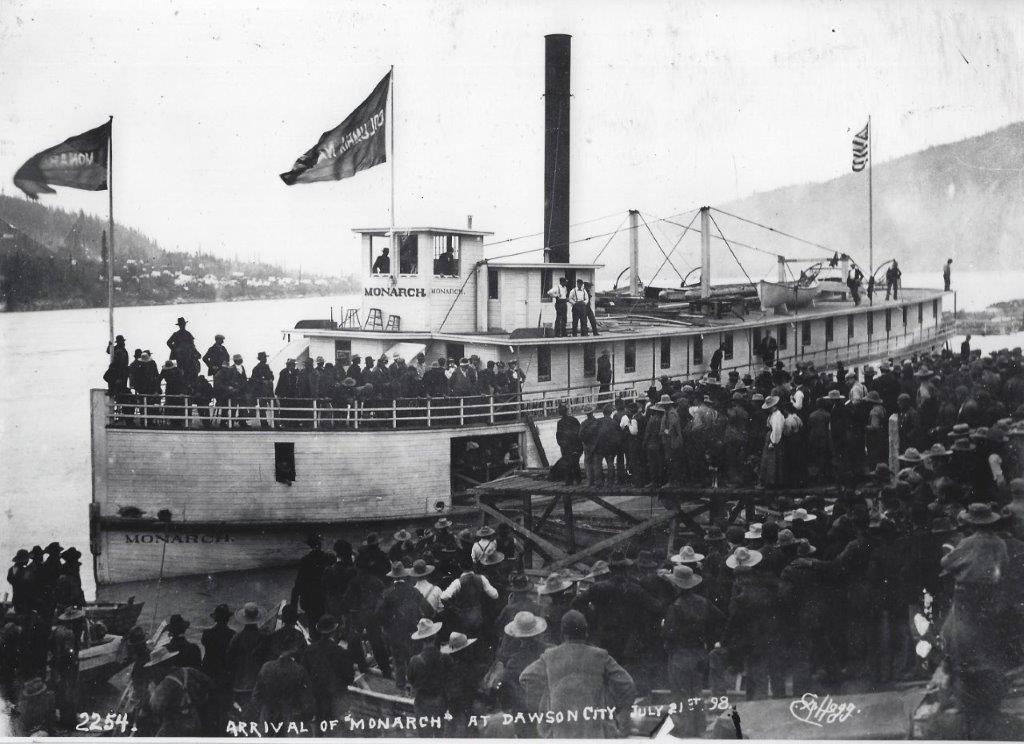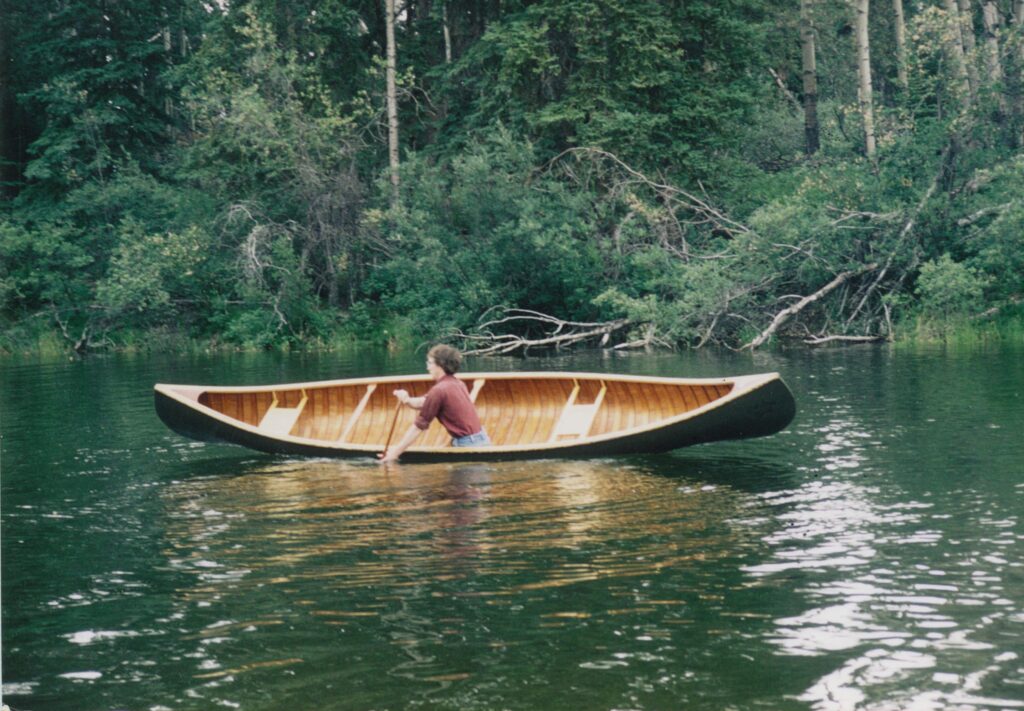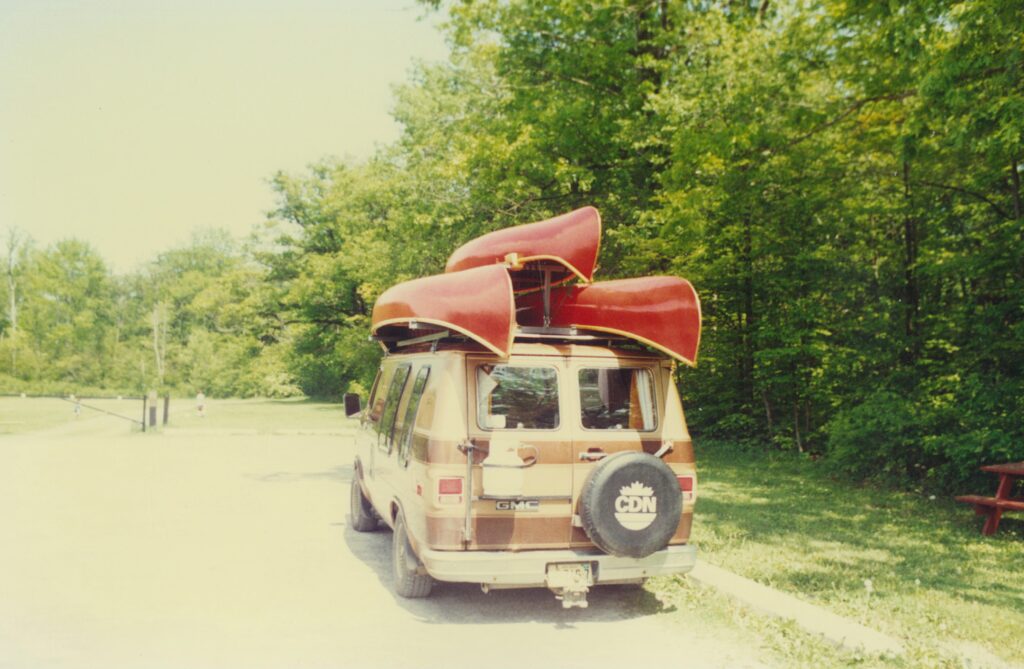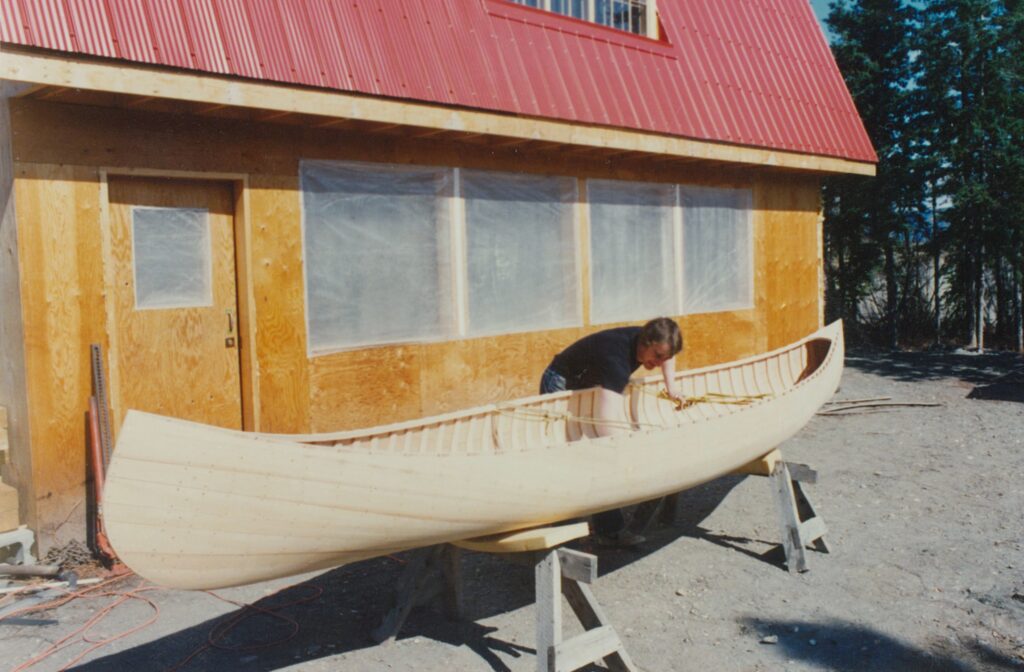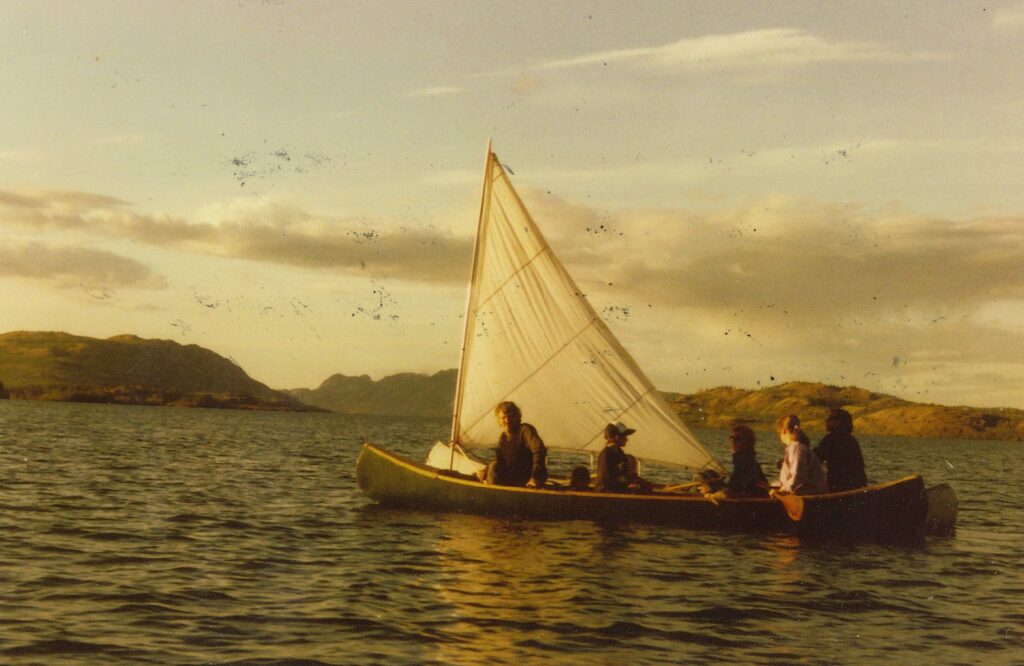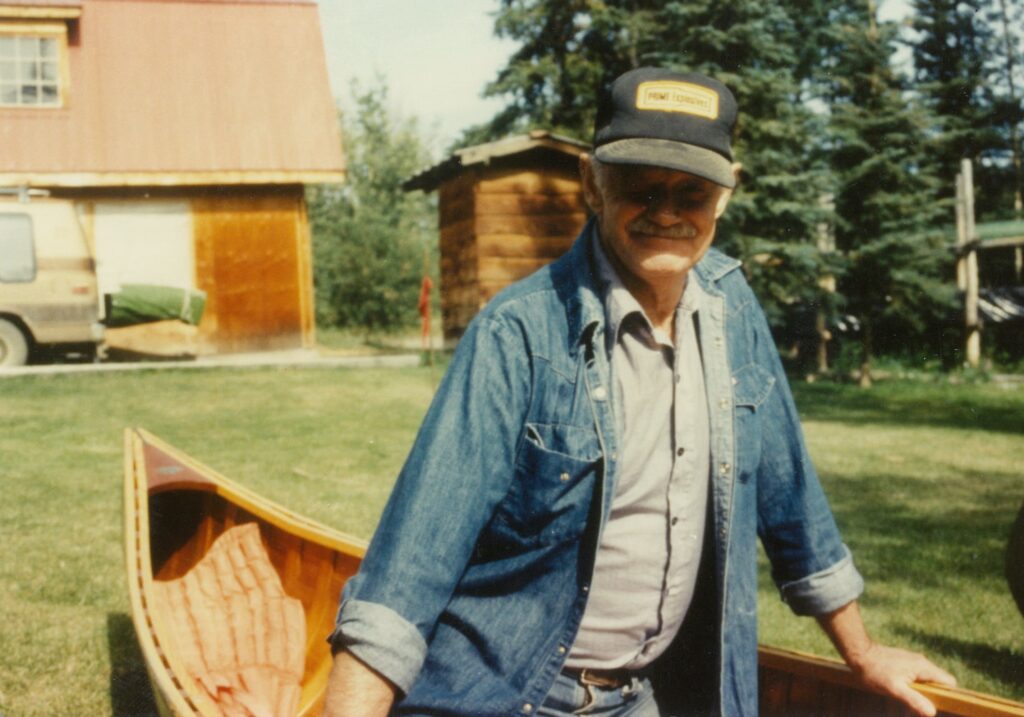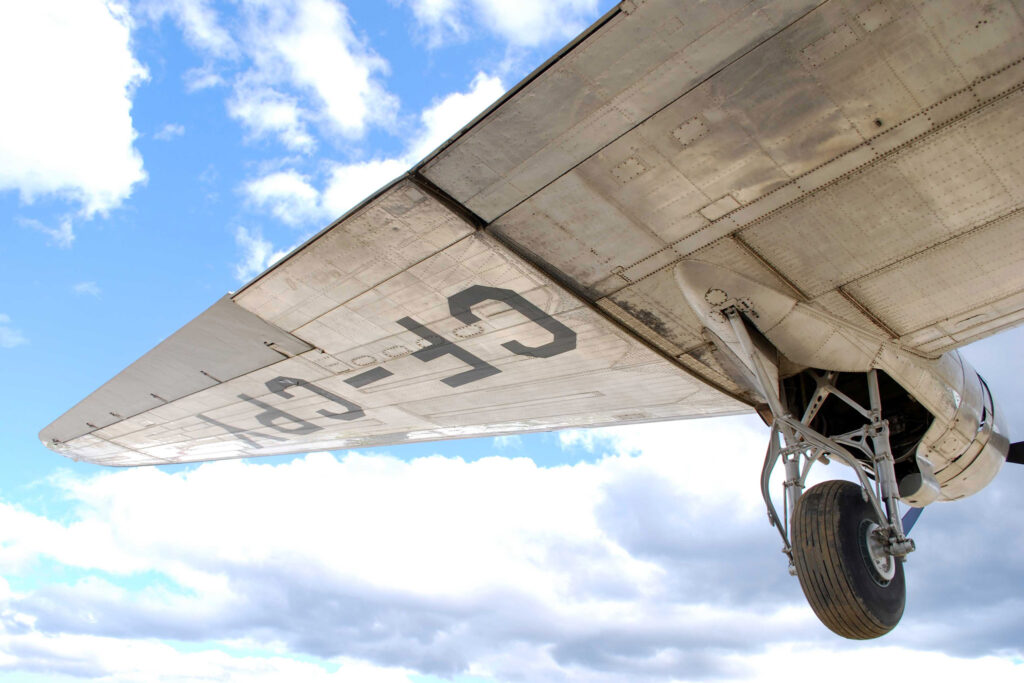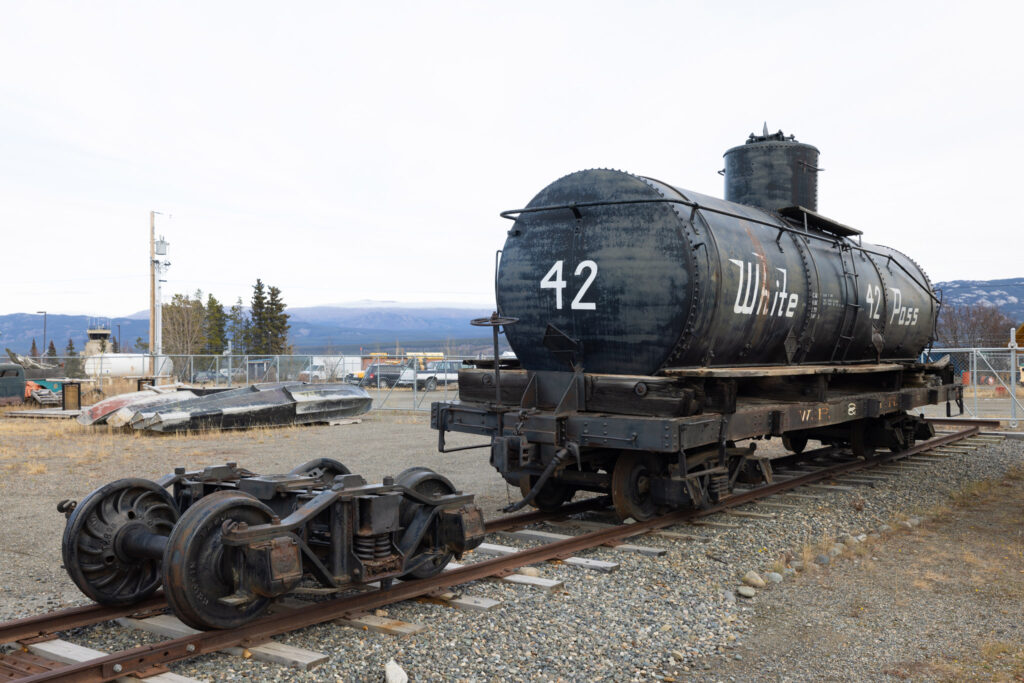Sternwheelers, Canoes and the 'Great River'
When visitors enter the museum, they walk directly into a startling sight — a brilliant red canoe dangling ribs-out from the hallway wall, and a massive wooden rudder suspended from the ceiling. This is ‘Clangor and Quiet’, an exhibit designed by former YTM Museumist Janna Swales in 2024.
The mighty Yukon River continues to capture the imaginations of lifelong Yukoners and visitors to our territory alike. Although the river has been supplanted as the main artery of commerce and trade by the highways and runways of the Yukon’s capital city, it continues to occupy an outsized place in our concept of just who we are as Yukoners.
How does a canoe change its direction? How does a sternwheeler? Imagine the creaking, groaning shifts of route and pace undertaken by the crew of the 210-foot S.S. Klondike II; now conjure up a paddle gently dipping into the river, its broad face steering the canoe into a beckoning eddy. The size is different, the sound is different, but the strategy is the same: use the river, fight the river, exist within the river.
In this exhibit, you’ll learn about how Paul Fletcher took inspiration from the sleek canoes of the Mi’kmaq people of Canada’s eastern woodlands to craft beautiful boats right here on the banks of Lake Laberge (impressing none other than noted outdoorsman Bill Mason). You’ll also hear about the trials of the Clara-Monarch, a giant sternwheeler lost both to the swirling waters of the Yukon and later to history itself.
Join us at YTM for an exploration of this iconic waterway, and the boats that have called it home.
